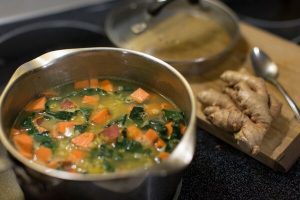 The Kitchari cleanse is a very mild variation of the traditional “Pancha Karma” cleanse and can be safely performed at home with minimal guidance. This particular cleanse is suitable for all body types, as it can be modified to fit everybody’s individual needs. This cleanse consists of taking in a mono-diet of the classical Ayurvedic dish, Kitchari, which will allow the digestive system to take a much-needed break, giving it new light and the ability to properly flush out toxins in the system.
The Kitchari cleanse is a very mild variation of the traditional “Pancha Karma” cleanse and can be safely performed at home with minimal guidance. This particular cleanse is suitable for all body types, as it can be modified to fit everybody’s individual needs. This cleanse consists of taking in a mono-diet of the classical Ayurvedic dish, Kitchari, which will allow the digestive system to take a much-needed break, giving it new light and the ability to properly flush out toxins in the system.
The Kitchari cleanse can be performed solely as a mild mono-diet cleanse, or it can go a bit deeper by adding the appropriate herbal regimens and daily practices. This cleanse is typically done for 3-7 days, depending on the individual’s schedule and the amount of cleansing needed. Ideally, this is a planned regimen that includes multiple pre-cleanse and post-cleanse regimens that will allow the system to ease into the cleanse and eventually ease out of it. If you are not careful, a cleanse can do more harm than good, further weakening the digestive fire and depleting energy levels.
*Please note that a cleanse of any kind should be avoided during menstruation.
Benefits of a Proper Kitchari Cleanse
- Increases the digestive capacity (Agni)
- Removes toxins from the system
- Removes heaviness and congestion from the body
- Removes heaviness and congestion from the mind
- Enhances the “Sattvic” (balanced) state of an individual
- Enhances energy and feelings of wellness (you may experience low energy during the cleanse due to the flushing of toxins and mono-diet)
- Increases confidence and motivation levels
Pre-Cleanse Procedures
The pre-cleanse is typically 3-7 days in length and performed directly before the actual Kitchari cleanse. Here is a general list of some of the important aspects of the pre-cleanse.
1. Begin to phase out junk food, refined sugar, processed food, and other harmful foods at least 7 days before the cleanse.
It is not recommended to go from eating pizza and cookies every day to a mono-diet of Kitchari overnight. This is considered too drastic and could potentially cause a harmful reaction during the cleanse.
2. Begin to perform Abhyanga (self-oil massage) at least 5-7 days prior to the cleanse.
Abhyanga Oil Massage is a classic way to prepare for a cleanse, as it begins to loosen the deep-rooted toxins, allowing their removal during the actual cleanse.
Read on how to perform an Abhyanga Oil Massage here.
Try our Tridoshic Massage Oil.
3. Take a Ginger and Baking Soda bath each night before bed.
This bath mixture is a great addition to the pre-cleanse. It increases circulation and promotes sweating, both of which will help to enhance the cleansing process. Perform this each night for 3-5 days before the cleanse.
Click here for a DIY Ginger Detox Bath recipe.
4. Take in 1 tablespoon of Tikta Ghrita (Bitter Ghee) 3-7 days prior to the cleanse.
This herbal-infused ghee contains some of the most powerful cleansing herbs available in Ayurvedic medicine. This herbal medicine will enhance the cleansing process and promote the removal of deep-seated, stagnant toxins throughout the system.
Purchase our Tikta Ghrita here.
5. Take 1/2 to 1 teaspoon of Triphala Churna each night 7 days before the cleanse.
Triphala is a traditional cleansing herbal formula that will flush out the GI tract, cleanse the liver and blood, promote healthy elimination, and increase the digestive capacity. It can be taken at the daily recommended dosage of 1/2 teaspoon per night, or this amount can be increased to 1 teaspoon during this time of cleansing.
Purchase our Triphala Churna here.
Read more on the health benefits of Triphala here.
Kitchari Cleanse Procedures
The Kitchari Cleanse is generally performed for 3-10 days depending on the individual needs and the desired results. During this cleanse, you are free to eat as much Kitchari as you feel you need. However, it is normal to feel a low appetite, especially after a couple of days into the cleanse. Here are some important recommendations when performing a Kitchari Cleanse.
1. Set specific dates for when and how long the cleanse will be.
This is necessary so that you make sure not to perform the cleanse during any big events, times of travel, stressful situations, excessive work, or other intense situations. If there is too much work, stress, and external stimulation, this can cause you more harm than good during this sensitive time of cleansing.
2. Eat a mono-diet of a cleansing Kitchari recipe.
This means that you should not take in any other foods at this time. The Kitchari can be made out of mung beans (split or whole) or red lentils, basmati rice, and easy-to-digest, well-cooked veggies such as carrots and greens. ***Please note that basmati rice is not recommended for everybody, and often Kapha types do not do well with refined grains. In this case, you should replace the basmati rice with quinoa, millet, or brown rice as appropriate. The Kitchari should consist of these main ingredients along with plenty of spices, ghee, cilantro, and lemon/lime juice to help increase digestion and encourage the removal of toxins.
Purchase our Kitchari Kits here!
Click here for our Cleansing Kitchari Recipe.
3. Remove any caffeine, tobacco, alcohol, or other substances from the daily regimen.
This is a very important and mandatory step during the Kitchari cleanse. Your body becomes extra sensitive during cleansing and continuing any harmful substances may cause potential damage during the cleanse. If you feel you cannot give up any of these habits during this time, it is best to not perform the cleanse until you feel you can.
4. Drink detoxifying herbal teas throughout this time.
The addition of a detoxifying herbal tea will help to flush out toxins during your cleanse.
Click here for our CCF Tea recipe.
5. Continue the Abhyanga Oil Massage and the Ginger & Baking Soda Bath each day during the cleanse.
Oiling the body and inducing sweat are both well-known therapies to remove deep-seated toxins. Without practices such as these, the toxin removal will remain on a more superficial level.
6. Continue to take in 1 tablespoon of Tikta Ghrita (Bitter Ghee) each morning of the cleanse.
This herbal-infused ghee contains some of the most powerful cleansing herbs available in Ayurvedic medicine. This herbal medicine will enhance the cleansing process and promote the removal of deep-seated, stagnant toxins throughout the system.
Purchase our Tikta Ghrita here.
7. Continue to take Triphala Churna each night during the cleanse.
Triphala is a traditional cleansing herbal formula that will flush out the GI tract, cleanse the liver and blood, promote healthy elimination, and increase digestive capacity. It can be taken at the daily recommended dosage of 1/2 teaspoon per night, or this amount can be increased to 1 teaspoon during this time of cleansing
Purchase our Triphala Churna here.
8. Make quiet time for yourself during the cleanse. This practice may be different for each individual dependent upon what personally resonates with you. I prefer to do a restorative yoga session each day followed by gentle breath work (pranayama) and meditation. You may prefer to journal, sit in silence, be out in nature, take a gentle walk (if the weather is appropriate), do art therapy, music therapy, or whatever feels good to you. Just remember that a cleanse has to have some mental detoxification to be truly healing!
Read my article on “How to Perform a Mental Detox” for more ideas.
Post-Cleanse Procedures
The way you come off a cleanse (any cleanse) is just as important as the cleanse itself. If you consume ice cream and pizza directly after your cleanse, the results may impair your health and digestion far worse than before performing the cleanse. In fact, you may become permanently allergic to a food if you eat it too soon after a cleanse. So, for your own sake, please remember these important factors while coming off of your cleanse.
1. Slowly ease yourself back into a “normal” healthy diet.
After eating only Kitchari for 5-7 days, it is important to come back into your normal diet gracefully. For the first week, I recommend eating only well-cooked meals using lots of spices and ghee. Avoid raw food for this time, refined grains, refined sugar, and all processed foods.
Some good recipe options for the first week after your cleanse are the Rejuvenation Kitchari, Vata-Reducing Kitchari, Breakfast Kitchari, Simply Spiced Quinoa Porridge, and Golden Spiced Sweet Lassi. After one week, you can begin to add more foods, but try your best to continue a healthy diet that is appropriate for your constitution and the season.
2. Slowly ease your way back into your normal routine.
Just as you must slowly introduce new foods, you also must slowly introduce new activities. This may include your exercise routine, strenuous Yoga classes, intense workloads, traveling, extreme hikes, and so forth. After a cleanse, energy is quite low and must be gracefully regained to become more vital. If this suggestion is not followed, you will be left depleted and susceptible to illness.
3. Slowly incorporate a healthy Rejuvenation Therapy.
After the cleanse, you are likely to feel sensitive and slightly depleted. To rebuild the body and mind (and Ojas!) in a healthy way, a proper Rejuvenation Therapy (termed Rasayana) is needed. This includes incorporating rejuvenating foods, herbs, and lifestyle/behavioral practices.
Try our Rasayana Ghrita (aka Rejuvenation Ghee)!
Read my article on Rejuvenation to find out specific details.
4. Drink the Rejuvenating Ojas Drink 2-3 times each week, post-cleanse, until strength is restored.
This almond-date drink is a delicious way to promote energy, vitality, and Ojas after your cleanse. It is creamy and “building”, but light enough to not disturb the digestion or create heaviness directly after the cleanse. But beware, too much of a good thing can be exactly that – too much! So please avoid taking it excessively for your personal body-type and needs.
Click here for our Rejuvenating Ojas Drink recipe.
Conclusion
As you can see, a more in-depth cleanse is not something to be taken lightly. It is important to take time to properly plan a cleanse. A proper cleanse will leave you feeling light, energized, and full of mental clarity. On the other hand, an improper cleanse will leave you feeling depleted, lethargic, and dull-minded with continued symptoms of indigestion. So please use awareness, listen to your body, and take it slow!
Try our 3 or 7-day Kitchari Cleanse Kits here.
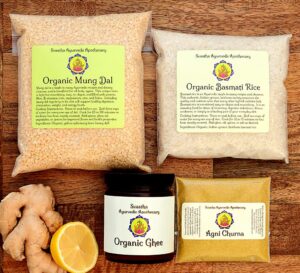
Try our 7-day Herbal Detox Kit!
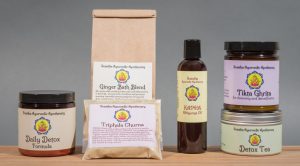
Discover healing recipes with my 30-Minute Ayurvedic Cookbook!

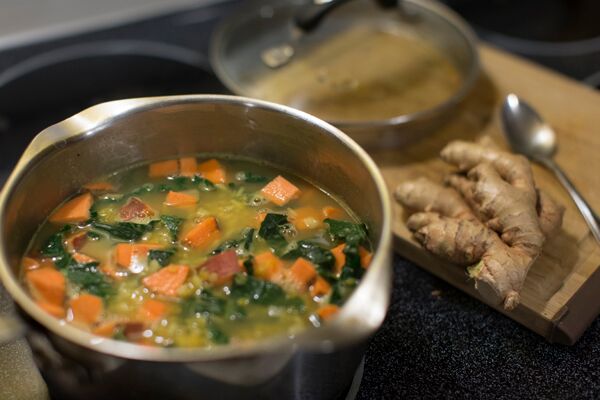
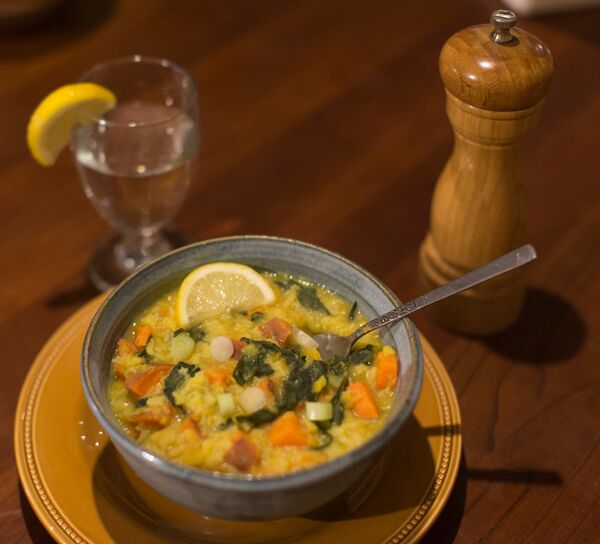
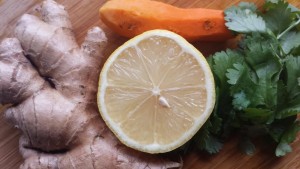
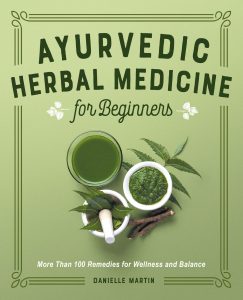
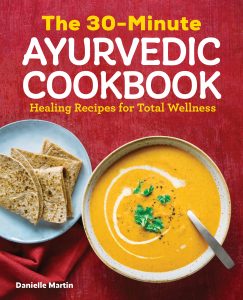

Sounds great
Hi Danielle,
I just came off of 3+ of a Cleanse for excess Pitta. After 2 evenings of doing the ginger/baking soda/ epson salt bath I broke out in a prickly rash, like a heat rash, mostly on my back. The tridoshic massage oil also caused a prickly sensation all over. I also broke out with 3 small herpes rashes on my upper body. As far as emotional and mental cleansing the cleanse was very successful. The others herbs I think worked well. Can you give me some feedback on the rashes?
More gratitude for all your responses.
Namaste.
Jean
Hi Jean,
I am sorry to hear about the rash that has flared up as a result of your cleanse. This may be directly related to the bath blend simply being too heating for your Pitta and this may have been the culprit. Although this does not happen often, it can provoke skin irritation in some individuals with high Pitta or sensitive skin.
My second thought is that it may be directly related to the detoxification that occurred during your cleanse. It is not uncommon for some individuals to have a “toxic overload” reaction in which the system becomes overwhelmed with the toxins that have been released from the deep tissues and the liver cannot handle processing them all at once. The toxins (which are now in the blood stream) then try to become released through the skin, creating rash and irritation. Once again, this is not uncommon, although it is not the desired effect we are trying for. Instead in these situations, it would be best to reduce the herbs and treatment protocol in general, to continue with the detox, but at a much gentler and slower pace.
Please email me through our contact page here and let us continue this conversation. I am curious to hear how things are going now, and I can help you through any issues that may be lingering.
I look forward to hearing from you!
Namaste,
Danielle
Dear Danielle,
Thank you so much for your wonderful website. I am planning to start a kidchari cleanse, everything is ready except for the tikta ghee, I can’t find it anywhere here in France. Is it possible to be substituted by something else, or by mixing at home spices with ghee?
Thank you very much for your help.
Maya
Hi Maya,
Thank you for your question! Tikta Ghee is the best for cleansing, but you can also use Triphala Ghee (sometimes called Triphala Ghrita). If this is not available either, plain ghee will suffice!
Happy cleansing:)
Namaste,
Danielle
Thank you so much Danielle for your fast answer!
Namaste🙏
Maya
Hello,
I just completed a 5 day kitchari cleanse following the protocol. Today I am really nauseous with a heightened sense of smell, could this be a side affect? Feels like I’m pregnant, but That’s not a possibility haha, just curious!
Hi Linda,
Thank you for writing in! I am sorry you are experiencing some unwanted symptoms after your cleanse. This could be for a few reasons.
The heightened sense of smell is quite normal, as all of the senses become more sensitive during and after a cleanse. You may have noticed that you are more sensitive to tastes, sounds, electronics, and even people’s energy as well.
As for the nausea, this can be common as well, although it is a sign that something is a bit off.
You may have returned to your regular diet or daily routine (work, activities) too suddenly. It is important after a cleanse to keep all activity very light and gentle, and the diet should be almost equally as simple as your mono kitchari diet, especially for at least 7 days post-cleanse. In traditional Ayurvedic cleanses, the meals after the cleanse consist of soupy rice (called peya) for a couple of days, then slowly making your way back to solid foods. This may be too extreme for most people, but keeping the diet soupy, warm, easy-to-digest, is of utmost importance. All new foods should be added with care very slowly over the next 7 to 14 days, and avoid meat (broths are suggested though), raw foods, and processed foods for at least 7 days.
Another possibility is that you have released toxins but they are were not eliminated through the GI tract properly. Ending the cleanse with a fairly strong purgative such as a large dose of Triphala, or 1 to 3 tablespoons of castor oil may be needed.
I hope this helps!
Namaste,
Danielle
Thank you for such a beautifully written article!! This is super helpful. I’m wondering- is the rasayana drink to be consumed the week right after the cleanse or would you recommend starting it the second week post cleanse?
Hi Danielle,
Is there any remedies for Endometriosis, fatigue, tiredness, fogginess?
Really appreciated all your help!!!
Hi Devi,
Thank you for writing in with your question! If it is suitable, I would recommend doing a Kitchari Cleanse, as it should produce positive results in all of these areas. These symptoms can all be triggered by inflammation and toxins, so a cleanse may be very beneficial for you.
If a cleanse is too much for you at this time, you can instead try eating a strict and clean diet, taking a daily detoxifying formula, drinking some cleansing herbal teas regularly, sweating regularly (through Ginger Bath or sauna), and performing a nightly oil massage. This will be a more gentle path for removing toxins and reducing inflammation. If you choose this option, I would adhere to this for at least 30 days.
Of course for the most specialized recommendations, a individual Ayurvedic consultation is most recommended, but this can be a good place to begin.
Let me know if any questions come up!
Namaste,
Danielle
Hi Danielle,
Any thoughts on taking the castor oil on the last day of the cleanse?
Hi Maria,
Thank you for your question! Yes, taking 1 to 2 tablespoons of castor oil in warm ginger tea or triphala tea during or at the end of your cleanse is often a great way to purge the colon. It is not always suitable for everyone and is often best done under the care of a practitioner (unless you are experienced), so I do not often write about this therapy to the general public. I use this for my cleanses and with most of my clients as well.
Let me know if you have any further questions!
Namaste,
Danielle